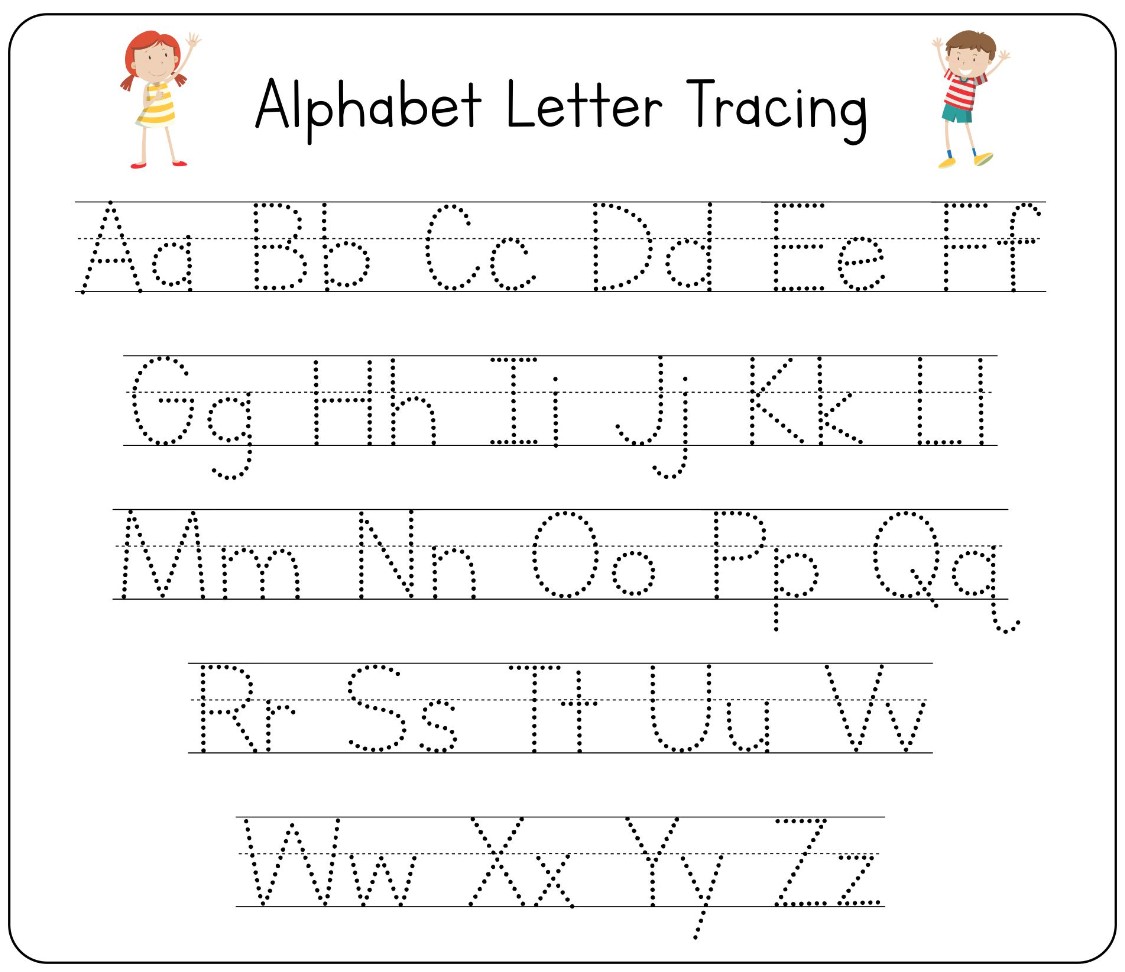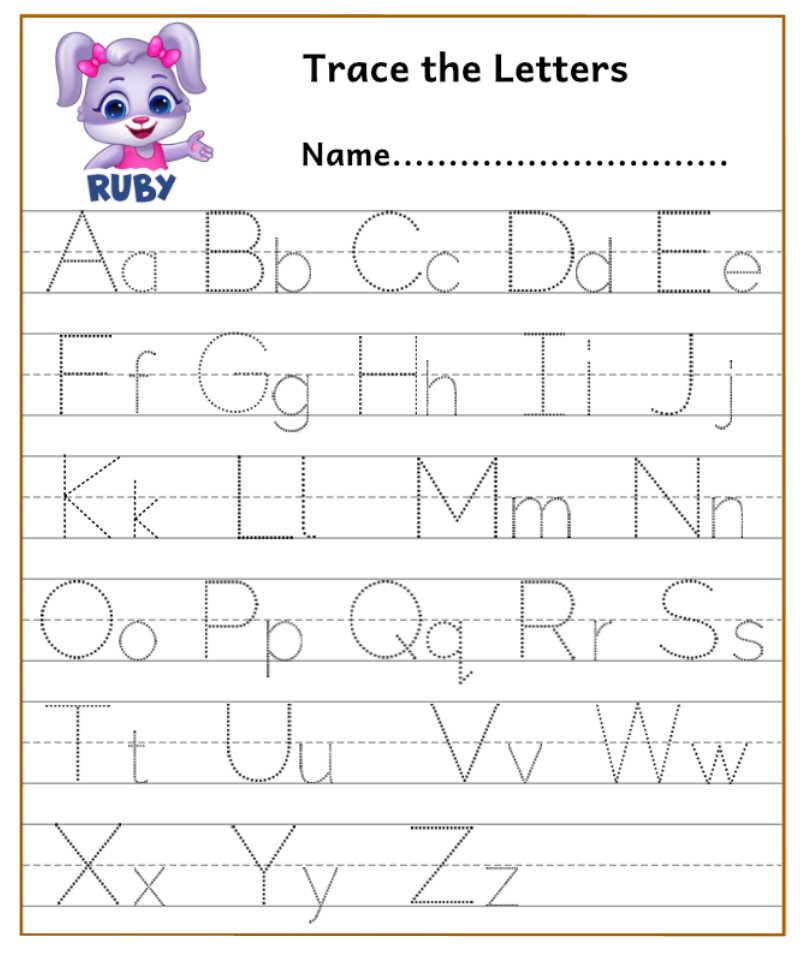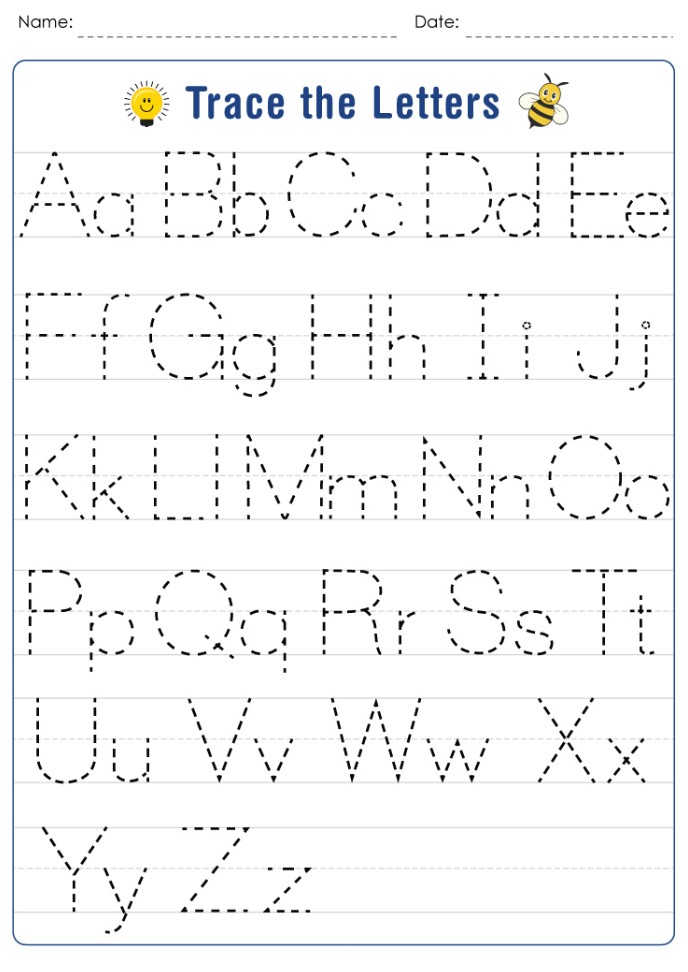Alphabet tracing is one of the fundamental building blocks of early childhood education. For generations, parents, teachers, and educators have turned to printable alphabet tracing resources to aid in the development of handwriting and letter recognition skills in young learners. In this article, we’ll delve into the significance of alphabet tracing, its benefits, and the importance of printable resources in today’s digital age.

What is Alphabet Tracing?
At its core, alphabet tracing involves guiding a child to trace over letters, either printed or written, to understand their shape and formation. This activity serves as an introduction to the English alphabet, providing a hands-on approach to learning.
Why is Alphabet Tracing Essential?
- Fine Motor Skills Development
Tracing letters requires precision and control – skills that contribute to the development of fine motor skills. These skills are not just crucial for writing, but for everyday tasks like buttoning a shirt or tying shoelaces. - Letter Recognition
As children repeatedly trace letters, they become more familiar with their shapes. This familiarity facilitates faster and more accurate letter recognition, an essential precursor to reading. - Foundation for Handwriting
A good handwriting style starts with understanding the structure of each letter. Tracing provides a guided method for children to practice and perfect their letter formations.

The Role of Printable Alphabet Tracing Worksheets
In an era dominated by digital screens and interactive apps, one might wonder about the relevance of printable worksheets. Here’s why they remain significant:
- Tactile Experience
Physical interaction with paper gives children a different sensory experience than a digital screen. This tactile experience can reinforce learning and improve memory retention. - Flexibility
Printable worksheets can be used anytime, anywhere. They don’t require electronic devices, making them especially handy for travel, waiting rooms, or places without electronic accessibility. - Customization
Teachers and parents can easily adapt printable worksheets to cater to a child’s individual needs. They can incorporate characters, themes, or subjects that the child is interested in, making the learning process more engaging.
Tips for Using Printable Alphabet Tracing Sheets
- Start Slowly: Introduce letters in a gradual manner, perhaps focusing on one letter a week, ensuring mastery before moving on.
- Use Multi-sensory Approaches: Pair tracing with songs, sounds, or tactile activities like sand tracing to enrich the experience.
- Incorporate into Daily Routines: Make tracing a regular part of the child’s day, integrating it into playtime, before bedtime, or as a morning activity.
- Celebrate Progress: Always encourage and applaud the child’s efforts, making them eager to learn and progress.

Printable alphabet tracing remains a cornerstone in early literacy education. Despite the influx of digital resources, the tactile nature of tracing on paper, combined with the flexibility and customization options of printables, ensure they have a lasting place in educational settings. For young learners, these worksheets provide the perfect blend of fun and function, paving the way for confident readers and writers.